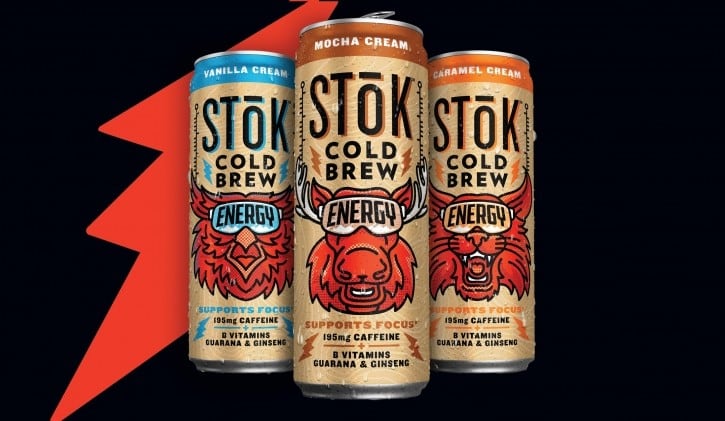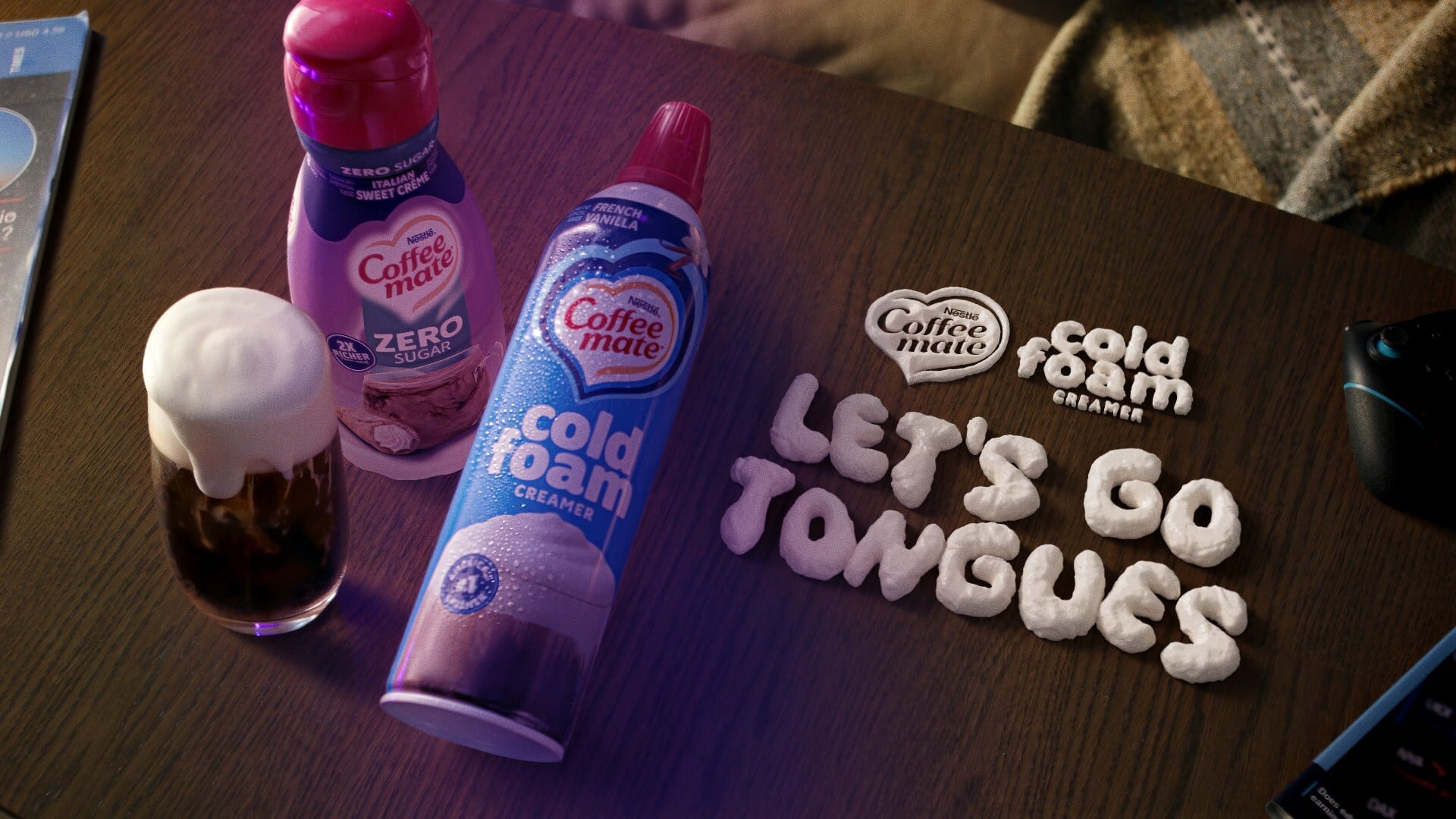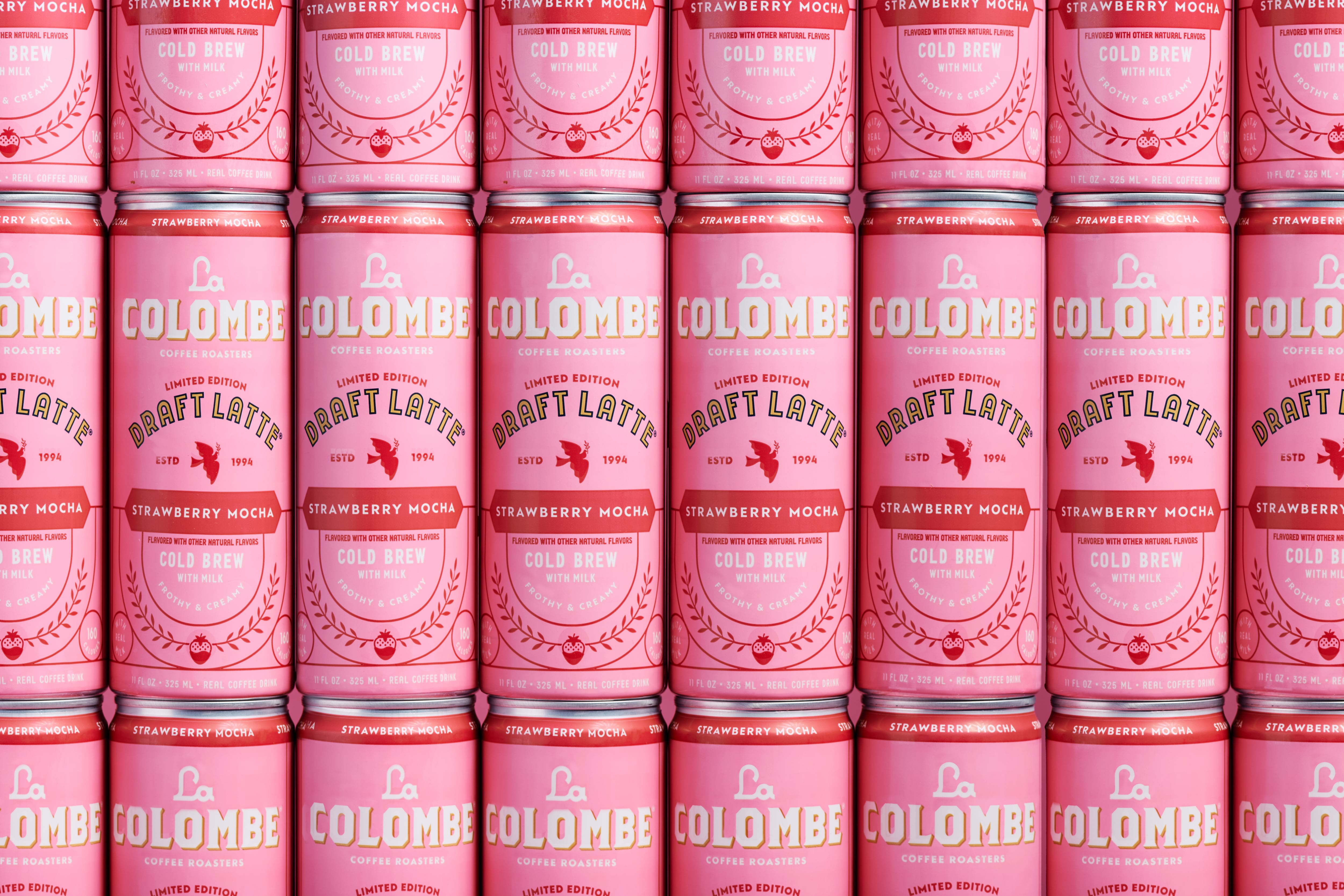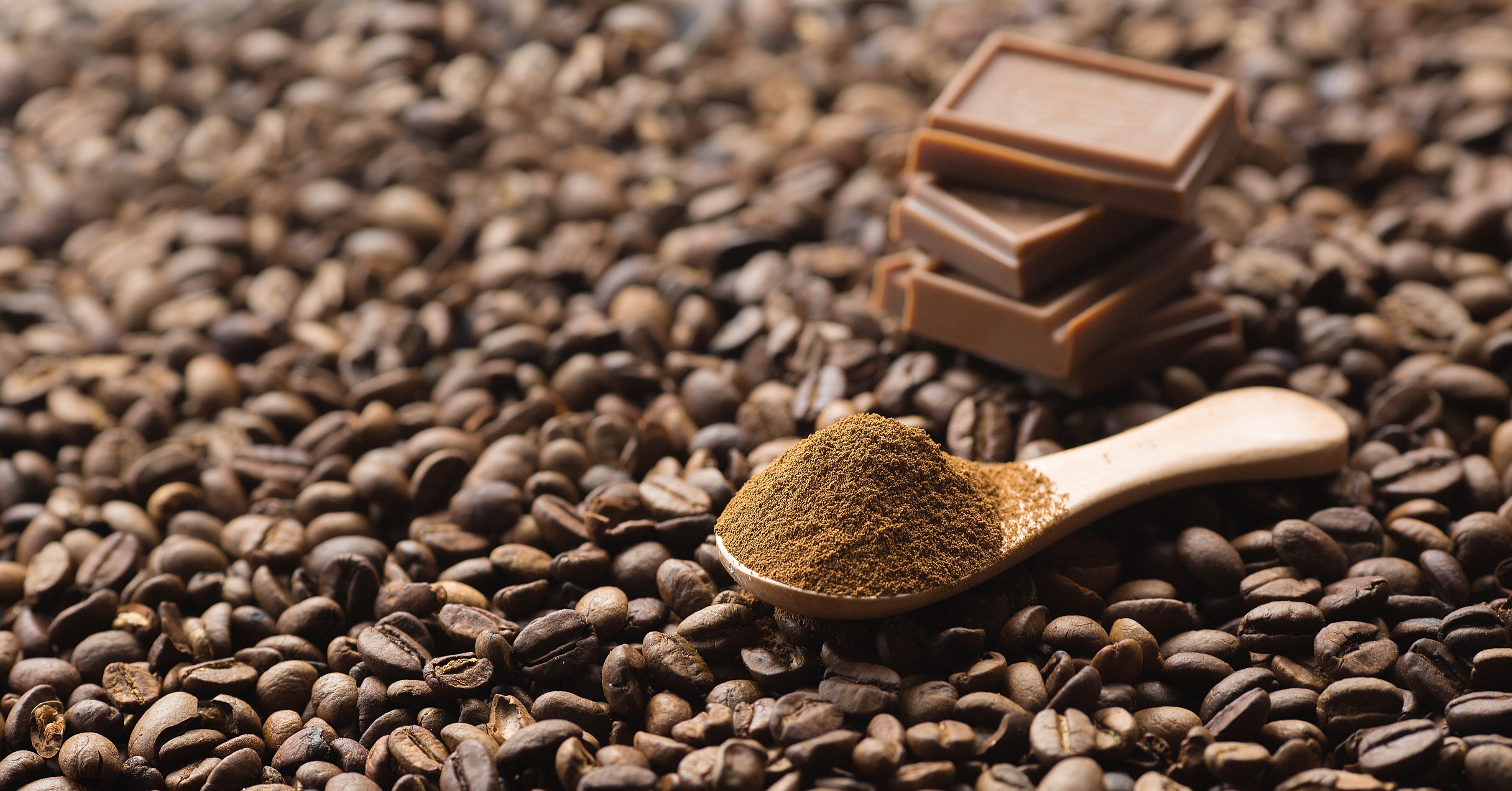The US creams and creamers category is close to surpassing $7bn in dollar sales, having grown 5.8% in dollar sales and 2.9% in volumes over the past year, according to Circana.
The refrigerated coffee creamer category has been the biggest growth contributor, with dollar sales of nearly $5.2bn in the past year and volume growth of 3.6%.
But what’s driving innovation in the category – and how are the key players responding to consumer demands?
Danone’s push in RTD coffee and cold foam products
In North America, Danone North America’s International Delight coffee creamer range and STōK cold brew coffee were key for the company’s favorable performance in the region in FY2024, along with high-protein yogurt line Oikos and water brand evian.
Globally, value-added segments including coffee and creamers comprise 60% of the group’s global revenue from Essential Dairy products.
North America is Danone’s second largest geographical zone, contributing to 24% of total sales in 2024 (€6.6 billion). The US is the leading market for Danone globally, contributing 21% of the company’s sales; followed by China (11%) and France (8%).
International Delight and STōK form part of Danone’s Coffee Creations business of creamers and ready-to-drink (RTD) coffee beverages. The portfolio comprises products that address consumer demand for replicating the coffeehouse experience at home.
But how has Danone captured consumers’ attention?
In 2024, the firm expanded its range of cold foam creamers to Silk and Dunkin (as in, Dunkin’ Donuts: Danone North America is the licensed manufacturer for Dunkin-branded creamers).
Danone also improved packaging sustainability within STōK Cold Brew, releasing a 48oz (~1.4L) bottle with up to 88% PCR (post-consumer recycled content).
In RTD coffee, the company also grew its STōK range with energy and decaffeinated cold brews, respectively; the former addressing demand for coffee with functional benefits (the range being fortified with vitamin B, ginseng and guarana), and the latter, targeting younger shoppers seeking decaf options.

Meanwhile, International Delight now comprises 20 product varieties, including a range of cold foam products, released in 2024. The new format is a ‘convenient new way to effortlessly bring a foamy, creamy twist to your daily coffee ritual’, according to then-VP of marketing, coffee creamers at Danone North America, Kallie Goodwin.
At the time, the company said that more than 50% of consumers create coffeeshop-style drinks at home and the term ‘cold foam’ was also attracting millions of views on social media, with more than 40 million views on #ColdFoamAtHome on TikTok.
Nestlé’s capacity struggles
A market-share leader in the refrigerated creamers space in North America, Nestlé has become the victim of its own success, with demand for its creamers outstripping supply due to limited manufacturing capacity.
Underperformance in creamers and frozen food were the main culprits for the group’s weaker performance in North America in FY2024, with CFO Anna Manz calling growth in the region ‘disappointing’.

In recent years, Nestlé has poured more than $3bn to enhance its manufacturing capabilities across the US. Plans for a 630,000sq.ft, $675m creamer production facility in Glendale, Arizona were announced back in March 2022, but the plant only came online this January.
It will produce creamers for brands including Coffee Mate, Natural Bliss and Starbucks, and can be extended to additional beverages in the future. Meanwhile, the location also placing Nestlé closer to its West Coast retail customers.
Nestlé says that consumers whiten more than 70% of their cups of coffee – and this number is expected to increase thanks to younger consumers.
Daniel Jhung, president of Nestlé USA’s coffee and beverage division, said the facility ‘was built with the flexibility needed to support innovation and will play a key role in helping us deliver for our customers and consumers’.
When it comes to creamers, cold foam has been a focus for Nestlé too, the company launching a range of Coffee Mate-branded creamers in early 2025.
Jhung called the range ‘our most experimental product yet’, adding that it has a proprietary mess-free dispensing tip and contains 25% less sugar and 25% more servings than competitors.
Head to head at Super Bowl LIX
Both Nestlé and Danone used their million-dollar advertising slots during this February’s Super Bowl LIX to highlight their coffee and creamer innovations: with Danone booking a debut slot for STōK and Nestlé promoting its cold foam creamer from Coffee mate.
See both commercials via the link below:
One to watch: Chobani

Greek yogurt producer Chobani entered the RTD coffee market through the acquisition of coffee roaster La Colombe at the end of 2023, with Keurig Dr Pepper still a minority shareholder and the coffee brand’s main distributor.
The following year was mostly about investment and strengthening La Colombe’s manufacturing and distribution – but in 2025, products are set to be rolled out ‘much more prominently across retail’, according to Chobani’s chief customer officer, John Frost.
Chobani’s creamer unit make up just 10% of the US coffee creamer segment, but within the yogurt company, it’s delivering 70% of the growth, he added.
Going forward, the dairy producer will leverage its expertise in creamers to expand the coffee roaster’s offering. And similarly to Chobani’s strategy in yogurt, betting on clean ingredients will be key, as would be addressing demand for reduced-sugar options and dairy-based protein.
So far, the tie-up with La Colombe has brought about reduced-sugar (13g per serving, which La Colombe claims is 50% less than the average flavored RTD coffee drink) RTD coffee flavors as well as a peppermint and chocolate-flavored creamer.
But in the near future, Chobani could combine its creamers with La Colombe’s multi-serve coffee to bolster the business’ value proposition.
Cold foam: A passing fad?
CPG and retail trends expert Nate Rosen told us that Nestlé and Danone have been in close competition on the creamer aisles, but despite being held back by capacity, Nestlé still has the upper hand.
“Nestlé and Danone are essentially mirroring each other in the coffee creamer space. International Delight and Coffee Mate dominate the category, and both brands have rolled out similar innovations like cold foam creamers within a short timeframe. Their plant-based offerings are comparable, with Nestlé’s Natural Bliss and Starbucks non-dairy lines competing against Danone’s Silk.
“The biggest differentiator is Nestlé’s stronger overall coffee ecosystem, thanks to its Starbucks partnership and Blue Bottle acquisition, which give it a premium edge and broader reach.”
Nate Rosen
“Meanwhile, Danone’s STōK cold brew gives it a foothold in the fast-growing RTD market, but it doesn’t quite match Nestlé’s scale in coffee. Ultimately, they’re competing at the same level, with similar strategies and product innovations keeping them evenly-matched.”
Rosen explained that the biggest area of improvement in creamers has been ingredient innovation, with more plant-based options, sugar-free varieties, and functional add-ins like MCT oil and protein hitting the shelves. Brands have also introduced new formats, such as cold foam and aerosol-based whipped creamers, to better serve iced and specialty coffee trends.
“Marketing has evolved significantly too, with stronger social media engagement and pop culture collaborations driving consumer interest,” Rosen told us. “Additionally, Nestlé and Danone have leveraged their broader coffee investments: Danone’s STōK aligns with cold brew trends, while Nestlé’s Blue Bottle reinforces its premium positioning, both ensuring their creamers remain essential for at-home café-style coffee.”
“We’re in this new wave of coffee which is about convenience and taste. Younger consumers want flavor and taste, and coffee drinkers in general want to make fun drinks at home.”
Nate Rosen
Who’s leading the way in flavor innovation in 2025? “I think Chobani has led in flavor innovation, really,” Rosen said. “While International Delight and Coffee Mate do have a lot of flavors, Chobani has upscaled them, and seem to be leading the category.”
“Cold foam is a fun one – but feels like more of a response to in-store popular drinks,” he added.
And going forward, at-home coffee brewing is likely poised for further growth, particularly as coffee prices remain elevated. “With coffee prices rising, more consumers are turning to at-home brewing, boosting demand for premium creamers that replicate café-style drinks,” Rosen said.
“Danone and Nestlé are well-positioned to capitalize on this trend through flavor innovations, product innovation like cold foam options, and especially, RTD expansions like STōK and Starbucks-branded beverages.
“I expect brands to push value packs, promotions, and enhanced at-home coffee solutions to attract more price-conscious consumers while still catering to those seeking indulgent coffee experiences.”
Coffee creamers: A billion-dollar affair
Circana data (see ‘sources’ below for scope) reveals that the entire refrigerated coffee creamer category in the US has grown by:
- 5.9% in dollar;
- 5.1% in unit (price per unit up 0.8%); and
- 3.6% in volume sales terms (price per volume up 2.2%, 16oz volume equivalency).
Total sales amount to around $5.2bn versus a year ago, with dairy half and half products (around $1.6bn) forming the bulk of this. This subcategory improved 6% in dollar sales terms over the year; growing by 0.6% in terms of units; 5.4% in price per unit; 1.2% in volumes, and 4.8% in price per volume.
In addition, dairy half and half remains more affordable in price per unit ($3.63 versus $5.63) and price per volume ($1.73 versus twice as much for shelf-stable, at $3.46) terms than shelf-stable creamers.
Meanwhile, sales of shelf-stable creamers have slid in the year, by -1.6% in dollar (around $976m); -4.8% in unit; and -2% in volume sales terms.
With market leader Nestlé relieving some of the capacity constraints that have held it back in recent years, innovation in the category is only set to intensify. How would competitors respond?
Watch this space.
Source:
Circana, Total US - Multi Outlet w/ C-Store (Grocery, Drug, Mass Market, Convenience, Military and Select Club & Dollar Retailers), latest 52 weeks ending 01/26/2025


